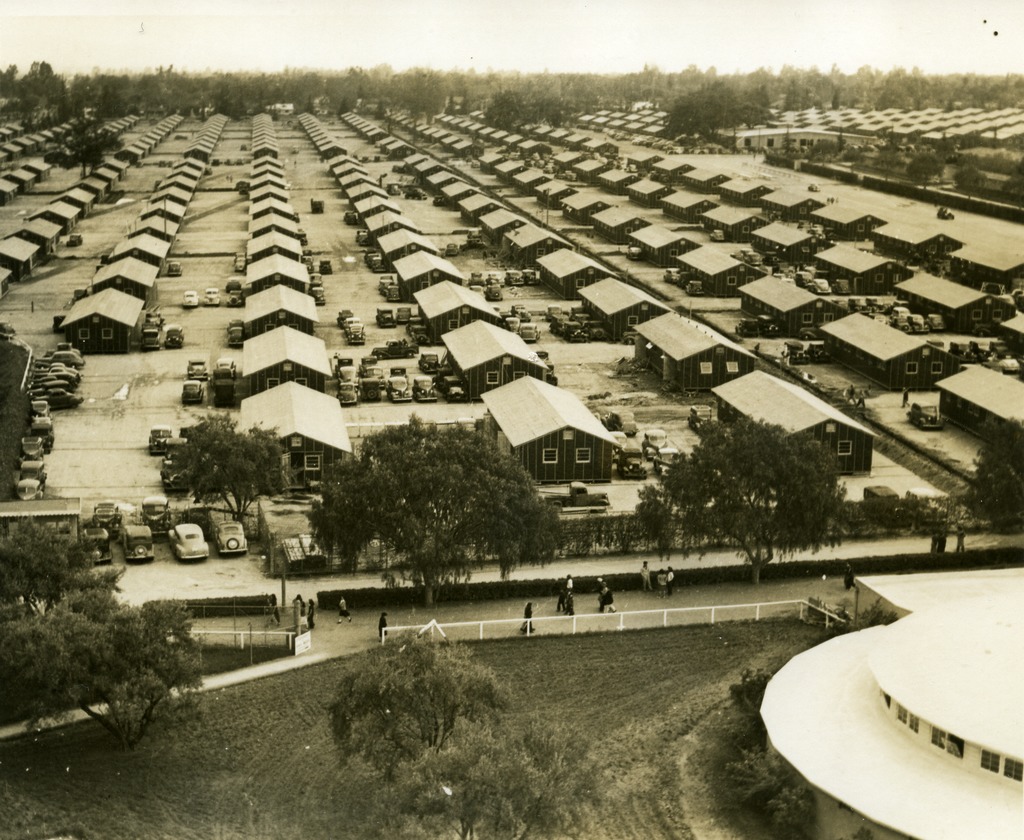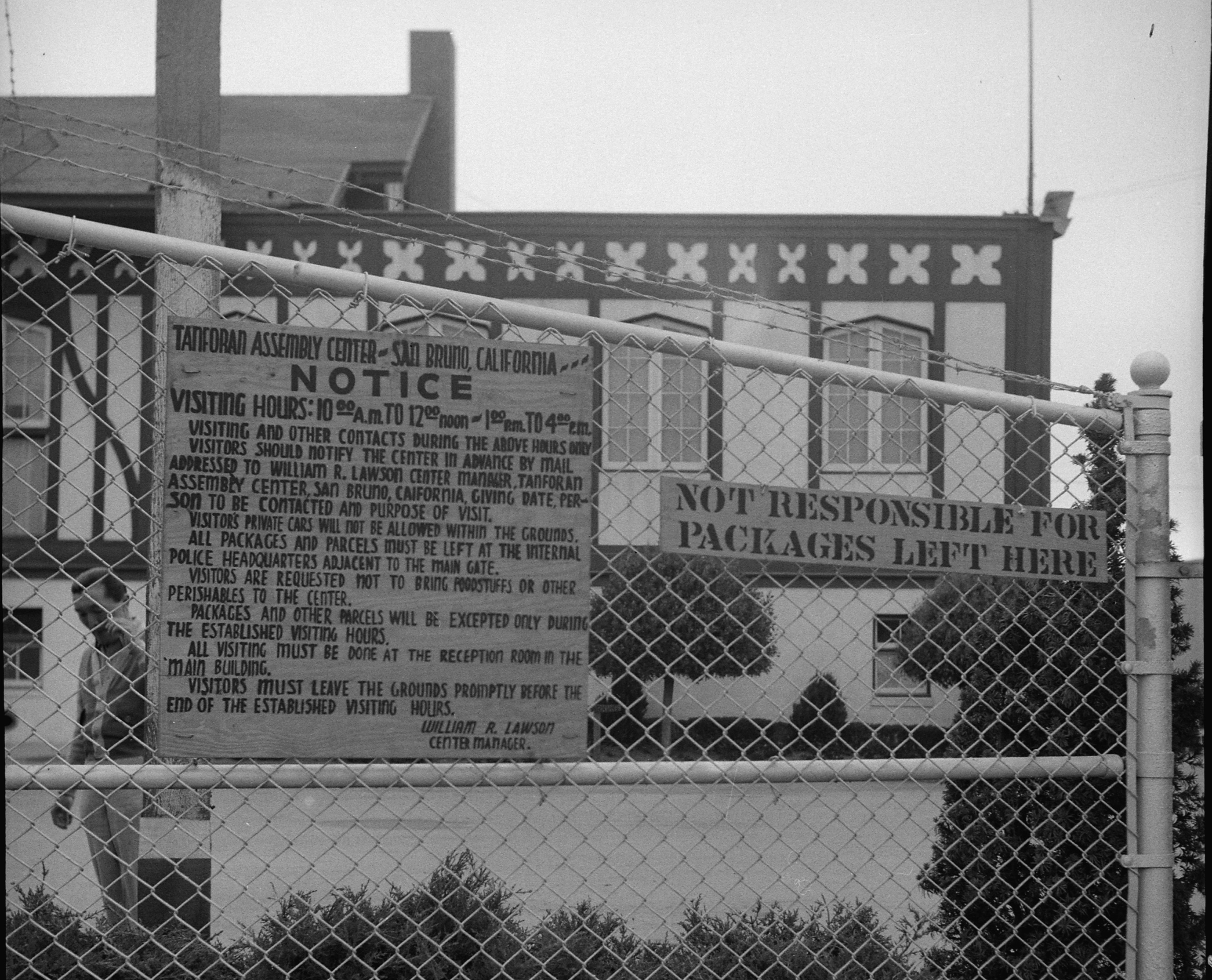September 18, 2017
Reading both popular and academic literature on the Japanese American incarceration, it seems we don’t even know how many “assembly centers” there were. Highly regarded scholarly works by Roger Daniels, Greg Robinson, and Tetsuden Kashima, among others, say there were fifteen. Personal Justice Denied, the report of the Commission on Wartime Relocation and Internment of Civilians, the closest thing we have to an official government report on the topic, lists sixteen, as do many other works no doubt influenced by it. Confinement and Ethnicity: An Overview of World War II Japanese American Relocation Sites by Jeff Burton, et al, a National Park Service publication that focuses on the current status of the sites, lists seventeen. A couple of the historical works on incarceration for children/young adults claim that there were eighteen assembly centers, and a couple even make up non-existent camps (“Tupelo” and “Woodland”). [1]
So which is correct?
Short answer: there were fifteen official “assembly centers,” but depending on the exact context, sixteen or seventeen could also be correct.
Long answer: There were fifteen sites that have “assembly center” in their names and that fit the generally understood definition of the term: short-term camps that were quickly adapted from existing facilities and that were mostly not far from the areas from which their Japanese American inmates had been removed. There were twelve in California and one each in Arizona, Oregon, and Washington. For a list, see Konrad Linke’s article in the Densho Encyclopedia. (You can also see photos of some of these sites in this photo essay from the Densho Blog.)

However, there were two other sites—called “reception centers”—that shared at least some characteristics with the “assembly centers” and that are sometimes included in the count. These are the “Owens Valley Reception Center” and the “Parker Dam Reception Center.” As with the “assembly centers,” Japanese Americans were removed from their homes in the spring and summer of 1942 and taken to these facilities, about 10,000 to the former and almost 12,000 to the latter. [2] But in other ways, they were unlike the other “assembly centers.” They were newly constructed and located far from Japanese American (and indeed any other substantial) communities. Most significantly, their inmates did not have to move again in the fall to long-term WRA camps, since the Owens Valley camp became Manzanar and Parker Dam became Poston. So depending on the exact wording and context one uses, there is some justification for either fifteen or seventeen being the right number.
So where does sixteen come from? In the report issued under the name of General John L. DeWitt, Final Report, Japanese Evacuation from the West Coast, 1942, Manzanar is listed as an “assembly center” but Poston is not. [3] Table 47 (pages 363–66) includes all 108 “Civilian Exclusion Orders” and lists the destination of the inmates affected by that order. In it, Manzanar is listed as both an “assembly center” and “relocation center” (e.g. WRA-administered camp), while Poston is listed as only the latter. A parenthetical note at the top of the table reads “Manzanar Classified as an Assembly Center Until May 31, 1942.” Since Manzanar was run by the WCCA until May 31, and transferred to WRA control as of June 1, this note suggests that WCCA stewardship was the key variable in determining (for the army anyway) what was an “assembly center.” If so, this also explains Poston’s omission as an assembly center, since it was never run by the WCCA. [4]
Manzanar differed from Poston in two other ways that support its being considered an “assembly center.” The first is timing. Manzanar was the first WCCA-administered camp to take inmates, with the first “volunteers” arriving at the end of March and the majority of its population having arrived by mid-April. By the time of its transfer to the WRA on June 1, Manzanar was essentially fully populated. By contrast, Poston inmates arrived later. While the first groups from rural areas of southern and central California came to Poston in mid to late May, most came in July and August, about the same time as Poston received transfers from assembly centers.
This brings us to the other difference: while pretty much all of Manzanar’s population came directly to Manzanar, about a third of Poston’s inmates came via various assembly centers. So how can Poston itself be considered an assembly center, if it received inmates from other assembly centers? In this respect, it is perhaps more similar to Gila River and Tule Lake, each of which saw a substantial portion of their populations—about 3,000 inmates each—go directly to those camps without passing through assembly centers.
While I can’t say for certain, I suspect the above factors are why Personal Justice Denied and other works consider Manzanar but not Poston an “assembly center.”
So perhaps there’s an argument for sixteen assembly centers as well as for fifteen or seventeen. Just don’t claim there were eighteen!
—
By Brian Niiya, Densho Content Director
Header image: Original WRA caption: San Bruno, California. A sign at the main entrance of the Tanforan Assembly center, through which all traffic passes. The gate is guarded and controlled by United States soldiers. June 16, 1942. Photo by Dorothea Lange, courtesy of the National Archives and Records Administration.
1. To be clear, these are ostensibly non-fiction works. “Tupelo” appears in Japanese Americans and Internment published by Globe Fearon in 1994 while “Woodland” is listed in Imprisoned: The Betrayal of Japanese Americans during World War II by Martin W. Sandler (Walker Books for Young Readers, 2013), one of the most acclaimed recent children’s books on the topic. How does one even make a mistake like this?
2. If counted as “assembly centers,” they would be the second and third largest, behind only Santa Anita.
3. The notorious report whose content was doctored prior to the Supreme Court cases in 1943–44 has a colorful history. Whatever the merits of the text, the statistical information in it is reliable and very useful.
4. Unique among any of the camps, Poston was jointly run by the Office of Indian Affairs and WRA until 1943.
